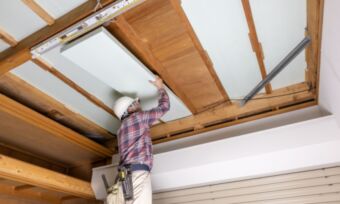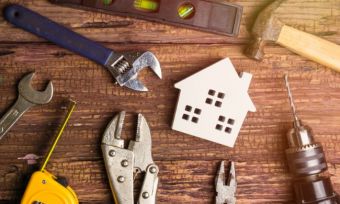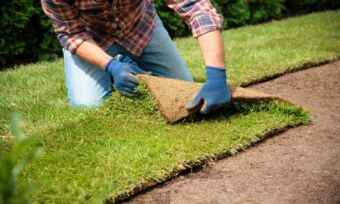Renovating for profit: 5 ways to add value
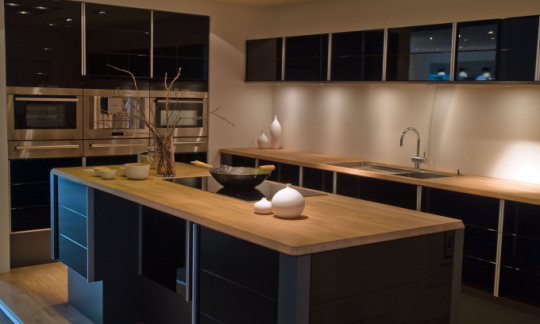
If you’re thinking about renovating for profit and wondering where to start, Canstar spoke with home renovation expert Cherie Barber to find out the five best renovation jobs you can undergo for adding value to a home, as well as three less likely to produce a good result.
Home renovations can be a way to add yo your enjoyment of your space, if you build your dream kitchen or add an outdoor area to relax in after a long day, but renovating a home can also be a good way to add value when it comes time to sell. A well-planned, well-executed renovation can potentially help you get a higher sale price for your home, but not all renovations hit the mark. According to Cherie Barber, founder of Renovating for Profit, the renovations most likely to add value to your home as as follows:
5 best renovations to add value
1. A kitchen makeover
Kitchens are more than just a place just to store and prepare food – a kitchen can be the heart of a family home, a place to catch up and congregate while preparing a meal. Ms Barber said kitchens are where we tend to spend most of our time, and that puts kitchens in the top spot for renovations that add value.
According to Ms Barber, a great kitchen makeover doesn’t have to involve designer brands. “Property valuers don’t look at the brand, or care if a kitchen is Ikea or Kaboodle,” she said. “However, it’s important that the kitchen suits the house – consistent design adds value. It must also be practical and functional, and the kitchen needs to look good.”
At the time of writing, renovating a kitchen in Australia can cost anywhere from $10,000 to $45,000 and up, but the sky really is the limit. That makes it essential to set a firm budget. “A general rule of thumb is to spend around 3% of your home’s current market value on the kitchen,” Ms Barber told Canstar.
On that basis, a $1 million home can demand a $30,000 kitchen budget including materials, appliances and labour. Spend something like $75,000 on a home worth $450,000 and you could be overcapitalising in a big way, Ms Barber cautioned.
Kitchen makeovers might not come cheap but the pay-off can be impressive. “Ideally, home owners should be looking to double their investment as a minimum,” noted Ms Barber. “So if you spend $30,000 on a kitchen, you’d want to see a $60,000 uplift in the property’s value.”
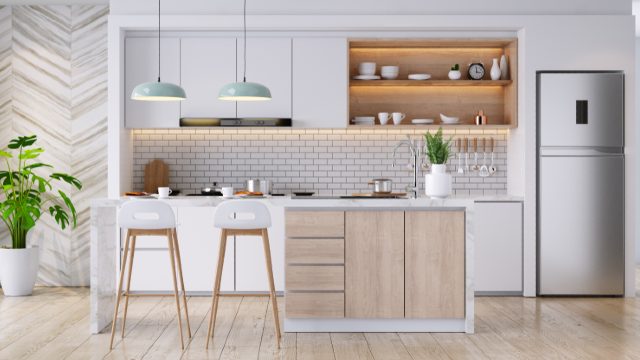
→ Related: 7 steps to designing the dream kitchen you’ve always wanted
2. Renovate the bathroom
Despite often being the smallest room in the house, a bathroom renovation can soak up plenty of cash. A bathroom renovation can cost anywhere from $10,000 to $35,000 and up at the present time, but could set you back more, depending on labour costs and the kind of materials you choose. Here too Ms Barber recommended a budget of 2%-3% of the home’s current value.
Two must-have features for modern bathrooms are a bath and storage. “Baths can take up plenty of room but they hold lots of appeal especially for families,” said Ms Barber. “Storage can add big value, and it can be achieved through a bigger vanity as well as concealed storage in walls.”
One area where it’s easy to go overboard is expensive feature tiles. They might look great but they don’t always pull their weight in terms of value-add. It’s also possible to overcapitalise on fixtures – a stone bath, for example, may look amazing, but it can also set you back $10,000.
“That’s the beauty of setting a maximum budget of 3% of your property’s value,” said Ms Barber. “It stops you making silly spending decisions when your property may not warrant that level of finishes.”
→ Related: How Much Does A Bathroom Renovation Cost?
3. Create an extra bedroom from existing space
Ms Barber pointed out that property prices are often shaped by the number of bedrooms, and creating an extra bedroom of decent size can be a real value-add. We’re not talking about a full-blown extension. It’s more about clever use of existing space in the home. Ms Barber believes adding a bedroom can be done cost-effectively by rejigging the internal layout and installing new walls.
“Oversized lounge rooms that can be reduced slightly in size, formal dining rooms that never get used, a large laundry, and roof space all have the potential to create an extra bedroom,” she explained. “The key is to only do this when space genuinely allows, and it doesn’t negatively impact on the quality of the other rooms in your home.”
To be sure you get the balance right, Ms Barber said it helps to know what’s expected of homes in your area. “In Sydney’s upper north shore for instance, it’s generally expected that homes will have a formal dining room, even though it’s rarely used. In other suburbs it’s more common for properties to have a combined lounge, dining, kitchen area,” she explained.
4. Add a garage
A garage can be a big value booster – and they offer more than a secure spot for the family car. A garage can double as an informal storage shed, a hobby space, or even a makeshift home office, which you could turn into something more permanent with the right decor.
A carport may be kinder on your budget and, according to Ms Barber, they’re definitely better than nothing. But in terms of value-add, she believes carports are the poor cousin to a garage. “If you have room to the side or front of the home and your budget allows, it’s worth adding a garage especially in an area where garages are prevalent.”
5. Spruce up the façade
A home’s façade is especially important if you’re planning to sell the property or attract quality tenants. “First impressions often set an expectation as to the rest of a home,” Ms Barber noted.
A whole variety of improvements can perk up a façade. According to Ms Barber, a new colour scheme, or cement or acrylic rendering can instantly modernise an ugly brick façade (never render a heritage brick!).
Giving paths and driveways a clean with a high-pressure water hose can remove built-up dirt and grime to freshen up a home. Replacing older accessories like a letterbox, porch lights, and even street numbers are relatively easy steps that can all contribute positively to the façade.
Installing a front fence can add value as it ticks the box for security and gives children a safe play area. “Even well-maintained plants and landscaping with mowed green grass adds value,” said Ms Barber. “Let’s be clear, weeds are not feature plants and don’t add value!”
It all sounds simple but external renovations can demand a solid spend. At the present time, you might expect to pay around $12,000 to render a small family home, and anywhere up to $50,000 to render a larger two-storey home.
In terms of your improvements budget, Ms Barber advised: “Aim to spend no more than 10% of your property value on external areas, and concentrate the bulk of this investment on the front façade to give your property the best chance of an uplift in value.”
→ Related: 6 Tips For Increasing The Value Of Your Home From The Outside
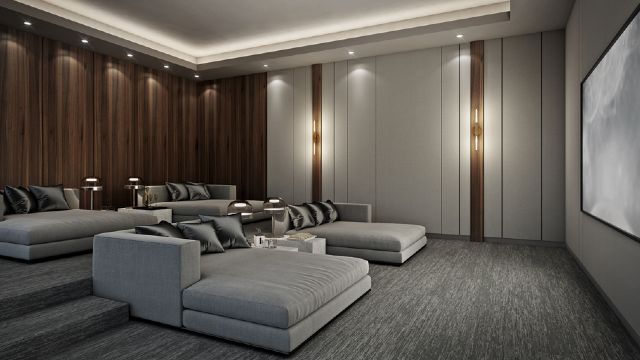
Renovations less likely to add value
Not all renovations are created equal. Some projects can actually turn buyers off, meaning you could struggle to get your money back – let alone profit from a project when it comes time to sell.
1. Swimming pools
Demand for pools has leapt ahead during the pandemic as we spend more time at home. But before taking the plunge to add a shimmering patch of blue to the backyard, consider whether it will pull its weight for value-add.
“It’s questionable as to whether a pool adds value,” Ms Barber said. “In prestige homes or very hot locations, they can definitely add value. But for homes located near a beach or public pools, the uptick in value is less certain.”
She noted that for investors there are serious issues around maintenance and pool safety. “If the pool fence is not maintained in a safe condition and someone happens to drown, you might be facing a lawsuit, so pools are more attractive to owner-occupiers.”
According to Ms Barber, a swim spa can be a better choice than a pool as they’re more affordable and can be used year-round though safety standards still apply.
According to Spa World $20,000 to $30,000 should secure a good quality swim spa, compared to $40,000 to $50,000 for an average (10m x 4.5m) in-ground pool. Be warned, though, using the heat pump to take a dip in a swim spa over winter can add an extra $200 to your monthly power bill.
2. Home theatres
Home theatres can come with a blockbuster price tag, and according to Ms Barber they don’t always add value. With so many of us subscribing to streaming services, we may be more likely to be watching different movies from various bolt holes around the home rather than gathering around a single screen.
If you do decide to transform a room into a home cinema, Ms Barber advised: “Be careful not to go too crazy with the latest technology, which can get rather expensive, very quickly.”
3. Smart home technology
The smart home market is growing in Australia, and we’re embracing devices and services that can make homes more convenient, secure and energy-efficient.
But instead of reams of cables hidden behind walls as used to be the case with smart home technology, we’re turning to WiFi-driven devices – anything from video doorbells and locks to energy sensors.
Will smart home technology add value to a property? The jury is out on this one. “The technology can quickly become outdated, and it can be frustrating from a user perspective. It’s something I’d really only recommend for prestige properties,” Ms Barber noted.
What else should you keep in mind when renovating for profit?
Before committing to a home improvement project, Ms Barber recommended looking at local property values for evidence of higher resale values following renovations. This can help guide you on how much to spend. “For lower value properties in regional areas, you need to be highly disciplined in what you spend to avoid overcapitalising. Otherwise, it can take years to see a return on your investment,” she said.
If the property is your forever home, Ms Barber said you can probably be a little more relaxed around these guidelines. Even so, you may decide to pull stumps and move at some point in the future. That’s when an overpriced, poorly planned or quirky renovation can leave you out of pocket – and short on potential buyers.
Compare Home Loans (Refinance with variable rate only) with Canstar
If you’re currently considering a home loan, the comparison table below displays some of the variable rate home loans on our database with links to lenders’ websites that are available for homeowners looking to refinance. This table is sorted by Star Rating (highest to lowest), followed by comparison rate (lowest to highest). Products shown are principal and interest home loans available for a loan amount of $500,000 in NSW with an LVR of 80% of the property value. Consider the Target Market Determination (TMD) before making a purchase decision. Contact the product issuer directly for a copy of the TMD. Use Canstar’s home loans comparison selector to view a wider range of home loan products. Canstar may earn a fee for referrals.
The comparison rate for all home loans and loans secured against real property are based on secured credit of $150,000 and a term of 25 years.
^WARNING: This comparison rate is true only for the examples given and may not include all fees and charges. Different terms, fees or other loan amounts might result in a different comparison rate.
 Owner occupied
Owner occupied
 20% min deposit
20% min deposit
 Redraw facility
Redraw facility

Up to $3,000 when you refinance with a Greater Bank home loan. Minimum loan amounts and LVR restrictions apply. Offer available until further notice. See provider website for full details. Exclusions, terms and conditions apply.
 Owner occupied
Owner occupied
 20% min deposit
20% min deposit
 Redraw facility
Redraw facility

Up to $4,000 when you take out a IMB home loan. Minimum loan amounts and LVR restrictions apply. Offer available until further notice. See provider website for full details. Exclusions, terms and conditions apply.
 Owner occupied
Owner occupied
 20% min deposit
20% min deposit
 Redraw facility
Redraw facility
 Owner occupied
Owner occupied
 20% min deposit
20% min deposit
 Redraw facility
Redraw facility
 Owner occupied
Owner occupied
 20% min deposit
20% min deposit
 Redraw facility
Redraw facility
Canstar is an information provider and in giving you product information Canstar is not making any suggestion or recommendation about a particular product. If you decide to apply for a home loan, you will deal directly with a financial institution, not with Canstar. Rates and product information should be confirmed with the relevant financial institution. Home Loans in the table include only products that are available for somebody borrowing 80% of the total loan amount. For product information, read our detailed disclosure, important notes and additional information. *Read the comparison rate warning. The results do not include all providers and may not compare all the features available to you.
Home Loan products displayed above that are not “Sponsored or Promoted” are sorted as referenced in the introductory text followed by Star Rating, then lowest Comparison Rate, then alphabetically by company. Canstar may receive a fee for referral of leads from these products.
When you click on the button marked “Enquire” (or similar) Canstar will direct your enquiry to a third party mortgage broker. If you decide to find out more or apply for a home loan, you can provide your details to the broker. You will liaise directly with the broker and not with Canstar. When you click on a button marked “More details” (or similar), Canstar will direct your enquiry to the product provider. Canstar may earn a fee for referral of leads from the comparison table above. See How We Get Paid for further information.
Cover image source: Ron Zmiri/Shutterstock.com
This article was reviewed by our Editor-in-Chief Nina Tovey before it was updated, as part of our fact-checking process.

Alasdair Duncan is Canstar's Deputy Finance Editor, specialising in home loans, property and lifestyle topics. He has written more than 500 articles for Canstar and his work is widely referenced by other publishers and media outlets, including Yahoo Finance, The New Daily, The Motley Fool and Sky News. He has featured as a guest author for property website homely.com.au.
In his more than 15 years working in the media, Alasdair has written for a broad range of publications. Before joining Canstar, he was a News Editor at Pedestrian.TV, part of Australia’s leading youth media group. His work has also appeared on ABC News, Junkee, Rolling Stone, Kotaku, the Sydney Star Observer and The Brag. He has a Bachelor of Laws (Honours) and a Bachelor of Arts with a major in Journalism from the University of Queensland.
When he is not writing about finance for Canstar, Alasdair can probably be found at the beach with his two dogs or listening to podcasts about pop music. You can follow Alasdair on LinkedIn.

